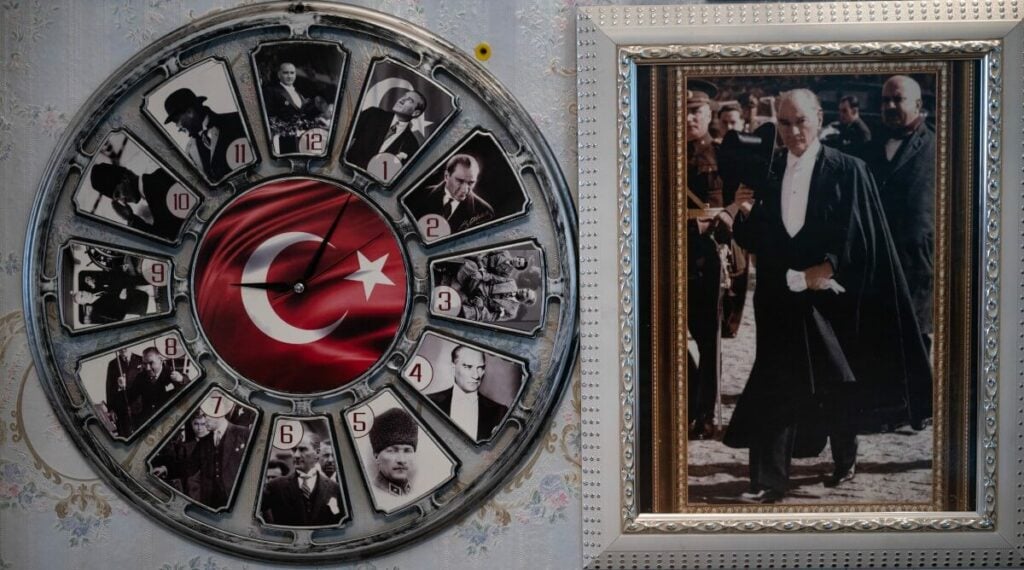Turkey marks the 100th anniversary of the birth of its modern republic today.
A century ago, Mustafa Kemal Atatürk proclaimed the country’s status as a republic in the wake of the collapse of the 600-year Ottoman Empire — which at the height of its power ruled much of the Middle East, north Africa and eastern Europe.
The empire had started to crumble in the early 20th century, when it became widely referred to as the “sick man of Europe.”
Atatürk was elected president in 1923 and served in that role until his death in 1938.
Seen as a national hero, Atatürk — whose name means “father of the Turks” — led a modernization drive in the war-weary nation.
His sweeping reforms included a drive to secularism, a new alphabet and the abolition of the Ottoman fez hat in favor of Western-style clothing.
Latin Alphabet
Ottoman Turkish script — a version based on Arabic script — was replaced in 1928 by the Latin alphabet.
The use of a 29-letter Turkish alphabet helped improve literacy rates in the early years of the republic.
Atatürk was heavily involved in the national campaign to teach the new alphabet and crisscrossed the country to introduce it, town by town.
A widely circulated black-and-white picture shows him standing next to a chalkboard, teaching new letters during one of his stopovers.
Secularism
In 1928, Turkey amended its constitution, removing a provision that stipulated “the religion of the state is Islam.”
The new republic rejected the Ottoman Empire’s allegiance to religion. The sultans who had expanded the empire had done so in the name of Islam and held the title of caliph.
After the caliphate was abolished on March 3, 1924, Atatürk forged a system of government based on a strict separation between mosque and state.
This reform, known as Kemalist secularism, was later used by the military as a pretext to remove governments deemed Islamist.
The republican state created a religious affairs department instead, known as the Diyanet — putting the Islamic clergy under government scrutiny.
Modern Turkey is an officially secular and predominantly Muslim state.
Women’s rights
The modern republic drastically transformed women’s status in society. Turkish women were given the full right to vote and to stand in elections in 1934, earlier than in France or Switzerland.
The reforms sought to break women’s traditional role in society and pushed them to have access to education, to enter universities and have professions including those dominated by men.
Atatürk said women would “walk together with men in social life to support each other.”
A hundred years on, Turkey remains a patriarchal society, but women are actively involved in public life. However, they remain under-represented in politics and can face widespread discrimination.
President Recep Tayyip Erdoğan has often urged women to have “at least three children” and has said rejecting motherhood means giving up on humanity.
Dress code
The republic introduced a new dress code in 1925 as part of the modernization drive, banning men from wearing the traditional fez hat and encouraging them to adopt Western-style clothing.
Those who refused to comply were arrested and, in some of the most extreme cases, executed. About 100 people faced the death sentence for failing to comply with the new dress code.
The reform was seen as an ostentatious break from Islam, and a visible sign to show those who were supporting Atatürk’s social revolution.
The republic’s first president was often seen dressed in a Western-style suit.
Ankara declared capital
Ankara, located in the Anatolian heartland, was in 1923 declared the official capital, replacing Istanbul after the fall of the Ottoman Empire.
Atatürk based himself in Ankara through the war of independence against the Ottoman sultan and invading forces, and the city was seen as relatively safe and away from potential threats.
Ankara, which had a population of around 35,000 in 1924, is now home to 5.7 million people. Housing parliament and state institutions, it is home to many of the country’s civil servants.
© Agence France-Presse

